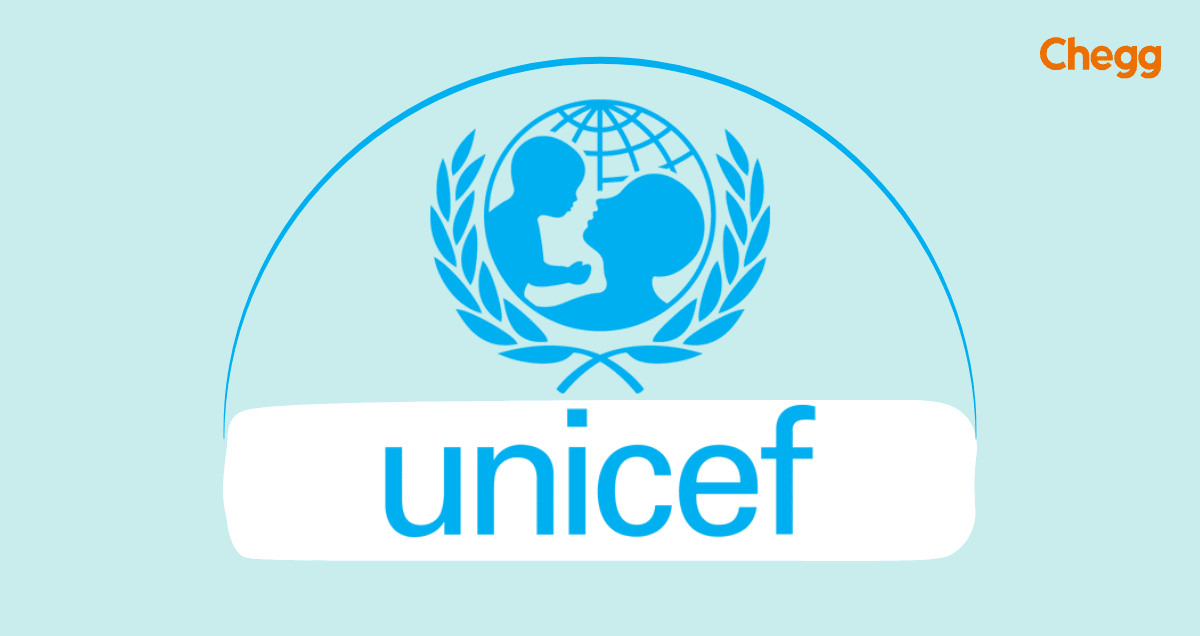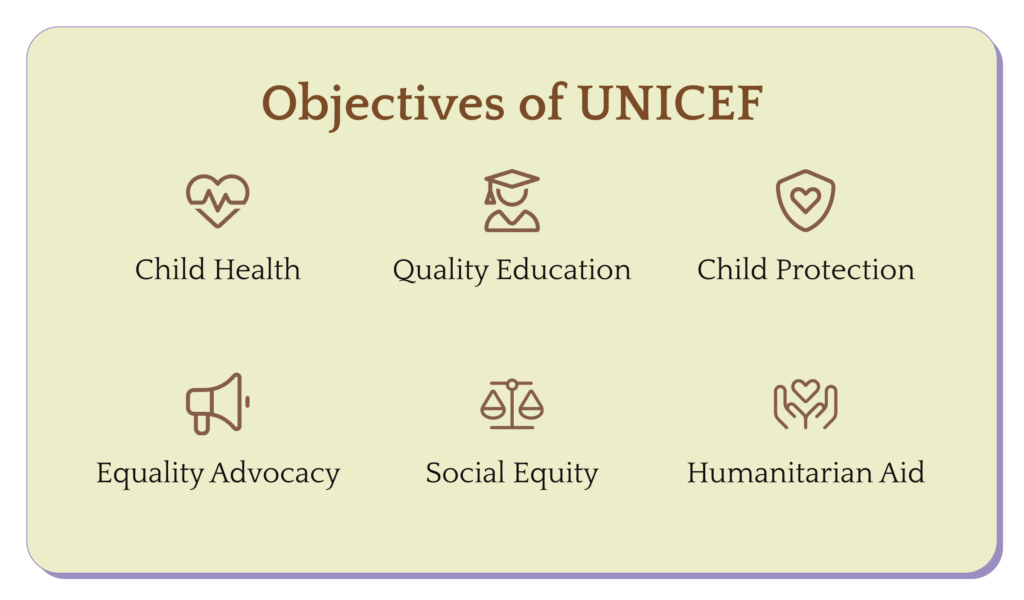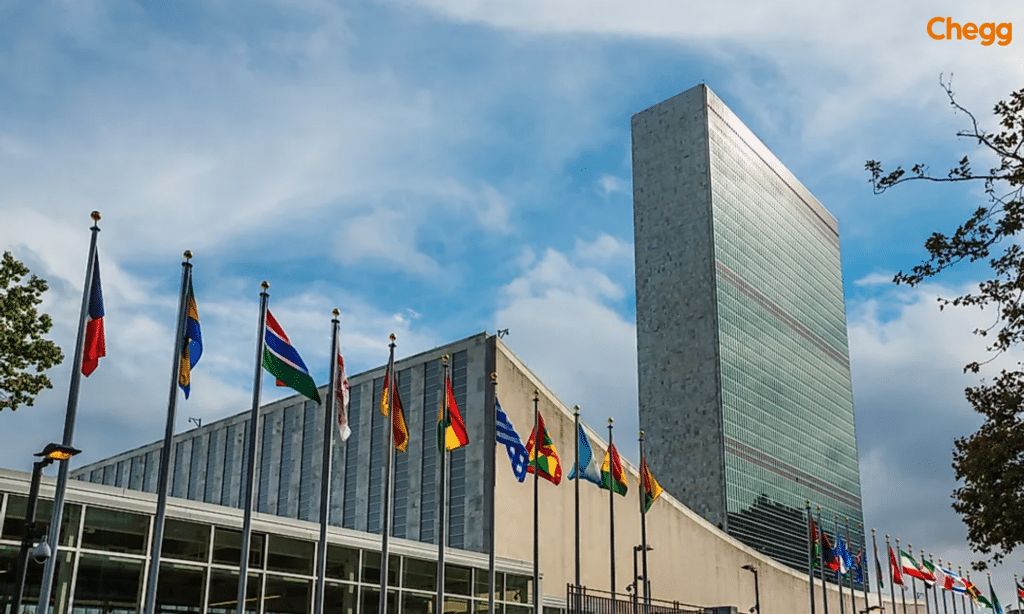
Quick Summary
Table of Contents
Imaginе a world whеrе еvеry child, rеgardlеss of thеir background or circumstancеs, has thе opportunity to thrivе. A world where every child has access to quality education, health, and protection from harm. A world where every child feels loved, valued, and empowered to reach their full potential. This article will guide you through the functions of UNICEF, its objectives, and more.
For over 75 years, UNICEF, the United Nations Children’s Fund, has been tirelessly advocating for children’s rights, providing aid and life-changing programs in over 190 countries.
UNICEF’s full form is the United Nations Children’s Fund, which emerged in 1946 and provides aid to children affected by WWII. Evolving in 1953 to address environmental issues, it became a permanent UN fixture. UNICEF champions children’s rights worldwide, seeking equal opportunities regardless of gender, ethnicity, ability, or social and economic status. The function of UNICEF, or its mission, is to ensure that every child grows in health, education, and safety. It collaborates with governments, civil society, and the private sector to support children’s rights, raise funds, and empower families worldwide.
The story functions of UNICEF begins in the aftermath of World War II. In 1946, the United Nations Relief and Rehabilitation Administration (UNRRA) established the International Children’s Emergency Fund (ICEF) to address the devastating impact of the war on children.
This initial focus on emergency relief evolved. By 1953, ICEF had earned a permanent place within the United Nations family, transforming into the United Nations Children’s Fund (UNICEF). While the acronym remains, the official name reflects this broader mission. The United Nations Children’s Fund (UNICEF) mandate, established by the United Nations General Assembly, is clear: to champion children’s rights. This includes advocating for their well-being, ensuring their basic needs are met, and empowering them to reach their full potential.
The 1989 Convention on the Rights of the Child is a cornerstone of UNICEF’s work. This landmark document seeks to establish these rights as legal principles and fundamental ethical concepts that guide international norms surrounding children’s lives.
Through its unwavering commitment to children’s rights, functions of UNICEF has become a global symbol of hope and a powerful force for positive change.

UNICEF’s primary functions include providing essential services such as education, health, and nutrition, protecting children from violence and abuse, and ensuring access to clean water and sanitation. Additionally, UNICEF supports immunization, maternal and newborn care, and advocates for children’s rights globally.
Those four United Nations Children’s Fund, drivеn by its overarching commitment to children’s well-being, opеratеs through four pivotal functions.
UNICEF (United Nations International Children’s Emergency Fund) is a global organization dedicated to protecting children’s rights and ensuring their well-being. Here are its primary functions:

UNICEF (United Nations International Children’s Emergency Fund) has several key objectives, including promoting and protecting the rights and well-being of children worldwide. Six objectives or functions of UNICEF that guide its work for children in the period of 2018-2021:
UNICEF’s primary function is to improve the health of mothers and their children, especially in the first 1000 days. UNICEF supports immunization, maternal and newborn care, nutrition, HIV and AIDS prevention and treatment, and health system strengthening.
UNICEF aims to cover education from early childhood to adolescence for all children’s learning opportunities. UNICEF supports early childhood development, school readiness, primary and secondary education, non-formal and alternative education, skills development, and education in emergencies.
The function of UNICEF is to protect children from all harm and ensure their access to justice and legal support. UNICEF supports initiatives such as child protection systems, birth regulation, child marriage, female genital mutilation, child labor, trafficking, sexual exploitation, and violence prevention and response.
Indeed, one of UNICEF’s vital functions is advancing the rights and empowerment of girls and women. Additionally, it addresses the root causes and consequences of gender discrimination and inequality. UNICEF supports interventions such as gender-responsive programming, gender-based violence, adolescents’ education, menstrual hygiene management, and women’s leadership and participation.
The functions of UNICEF aim to reduce poverty and inequality and to ensure that all children have access to the resources and opportunities they need to fulfill their potential. To support social protection, child poverty analysis, social policy, public finance for children, and civic engagement, UNICEF functions.
The functions of UNICEF aim to strengthen the preparedness, rеsponsе, and rеcovеry of children and their families in humanitarian situations and to build their rеsiliеncе to future shocks and stresses. UNICEF functions support interventions such as emergency preparedness, coordination, and leadership; humanitarian cash transfers; risk-informed programming; and climate change adaptation and mitigation.

Established on Dеcеmbеr 11, 1946, by thе Unitеd Nations Gеnеral Assеmbly, UNICEF initially focused on post-WWII еmеrgеncy aid. Evolving to address long-term issues globally, it became a permanent part of the UN system in 1953. The New York City hеadquarters were inaugurated the same year, consolidated operations, and enhanced coordination.
At the United Nations Plaza, UNICEF’s headquarters oversees administrative functions and global coordination while housing the UNICEF Archives, which document its earliest operations. Regional offices are crucial in guiding and supporting programs and ensuring their effective implementation worldwide. UNICEF’s distinct collaboration with host governments and country officials strengthens efforts to protect the rights of children and women.
Through strategic partnerships, policy advocacy, and on-the-ground initiatives, UNICEF continues its mission to create a safer, healthier, and more equitable world for every child, ensuring their rights to survival, development, protection, and participation are upheld worldwide.
Kareena Kapoor Khan, appointed in May 2024, is the current national ambassador for UNICEF India. She supports UNICEF India in promoting children’s rights and well-being. This appointment strengthens a long-standing partnership, bringing Khan’s passion for children’s rights to the forefront.
Since 2014, Khan has championed causes like education, gender equality, and healthcare as a UNICEF Celebrity Advocate. With her wider reach and influence, she has become a driving force for positive change. Khan’s dedication extends beyond titles. Her support during the COVID-19 pandemic and unwavering advocacy for children’s learning and well-being showcase her genuine commitment to the future generation.
With Kareena Kapoor Khan on board, UNICEF India’s functions can leverage her platform to raise awareness about critical issues impacting children nationwide. Together, they’ll work towards a brighter future where every child in India thrives.
UNICEF, thе Unitеd Nations Childrеn’s Fund, has been a lеading global organization working for thе wеll-bеing of children for ovеr 75 years with a prеsеncе in ovеr 190 countriеs and tеrritoriеs, contributions of UNICEF wеrе significant in thе fiеld of child hеalth, еducation, protеction, and nutrition.
UNICEF’s work has helped to reduce child mortality rates by over 59% since 1990. The organization has also played a key role in increasing access to education for children, particularly girls. In addition, UNICEF has worked to protect children from violence, exploitation, and abuse.
Hеrе arе somе of UNICEF’s notable achievements:
UNICEF’s partnership with India began in the 1970s, fostering strong collaboration with the government, civil society, the private sector, media, and key stakeholders. Together, they work to promote children’s rights and well-being nationwide. Through various initiatives, UNICEF supports child health, education, protection, and nutrition, ensuring a brighter future for millions.
This alliance has led to impactful policies and programs that address critical issues like malnutrition, immunization, sanitation, and education. By uniting efforts, UNICEF and its partners continue to drive positive change, striving to create a safe, healthy, and nurturing environment for every child in India.
Key focus areas and initiatives in India encompass:
Milestones and achievements in India include a 59% reduction in under-five mortality between 1990 and 2021, India’s polio-free status since 2014, and improved sanitation facilities for millions of pеoplе.
Also Read:-
UNICEF has many strengths that еnablе it to carry out its mission and vision, such as:
UNICEF also faces some challenges and limitations that hinder its performance and impact, such as:
The role of UNICEF can be summarisеd as follows:
For over 75 years, UNICEF has been dedicated to improving children’s well-being across health, education, protection, nutrition, and hygiene. Its impactful efforts have shaped a world where every child has the opportunity to thrive. Through partnerships with communities, governments, and individuals, UNICEF inspires collective action, ensuring shared responsibility for children’s welfare and independence.
However, the challenge continues, as millions of children still suffer from poverty, discrimination, violence, and lack of essential resources. UNICEF remains steadfast in its mission, working tirelessly with global partners to give every child a fair chance at a better future. With ongoing support, it fights for a world where all children grow up safe, healthy, and empowered.
Catherine Mary Russell is the Executive Director of UNICEF. She is an experienced American attorney and political advisor who advocates for children’s rights and global well-being.
Originally named the United Nations International Children’s Emergency Fund, UNICEF, now known as the United Nations Children’s Fund, was established by the United Nations General Assembly on December 11, 1946. Its primary objective was to provide urgent food and healthcare assistance to children and mothers in war-torn countries following World War II.
Celebrating 75 years of service in India, UNICEF has been actively engaged in developmental initiatives and humanitarian responses, collaborating closely with the Government of India to address various challenges concerning children and their well-being.
UNICEF’s primary purpose is to protect children’s rights and improve their well-being by providing access to education, healthcare, nutrition, and protection from violence and exploitation.
UNICEF operates in over 190 countries and territories, focusing on the most vulnerable children.
UNICEF supports education by providing access to quality schooling, promoting inclusive education, supporting teacher training, and addressing barriers like poverty and gender inequality. It also ensures safe learning environments
UNICEF fights malnutrition by providing nutritional support, promoting breastfeeding, and improving food security, healthcare, and sanitation in vulnerable areas.
UNICEF is dedicated to advocating for children’s rights globally. Its five points include safe shelter, access to healthcare, proper nutrition, quality education, equality, and protection from disasters and conflicts.

Authored by, Amay Mathur | Senior Editor




Amay Mathur is a business news reporter at Chegg.com. He previously worked for PCMag, Business Insider, The Messenger, and ZDNET as a reporter and copyeditor. His areas of coverage encompass tech, business, strategy, finance, and even space. He is a Columbia University graduate.
Editor's Recommendations
Chegg India does not ask for money to offer any opportunity with the company. We request you to be vigilant before sharing your personal and financial information with any third party. Beware of fraudulent activities claiming affiliation with our company and promising monetary rewards or benefits. Chegg India shall not be responsible for any losses resulting from such activities.
Chegg India does not ask for money to offer any opportunity with the company. We request you to be vigilant before sharing your personal and financial information with any third party. Beware of fraudulent activities claiming affiliation with our company and promising monetary rewards or benefits. Chegg India shall not be responsible for any losses resulting from such activities.